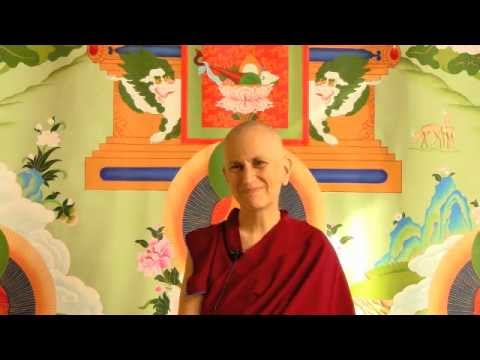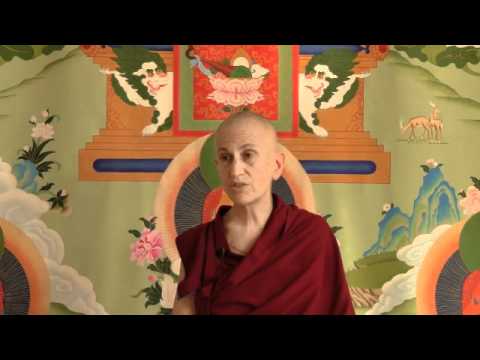Activities of wrath
This talk was given during the White Tara Winter Retreat at Sravasti Abbey.
- An explanation of the four activities done in order to benefit sentient beings
- The symbolism of visualizing the Lord of Death
White Tara Retreat 11.1: Q&A Sadhana wrathful activities (download)
So somebody is writing and saying, “I don’t want to be destructive and I want to reform and transform my destructive emotions. But why is it, in the White Tara sadhana, that at one point visualize the dark blue rays radiating from ourselves (as part of the protection circle) and bringing about the accomplishment of the activities of destruction.”
Wrathful activities
Okay. So, we have to understand this, that in kriya tantra—or tantra in general—they speak of four activities: peace, increase, power (or control, or influence), and wrath. And these are done in order to benefit sentient beings. So they’re all done with the mind of compassion.
So, clearly, doing peaceful activities to pacify sentient beings’ minds, make them calm. Doing activities of increase to increase their merit, their life spans, their wisdom, all their virtuous qualities. The activity of control (or influence) whereby you’re able to steer people in a good direction and get them going in the right way instead of them wandering all over the place. And then the fourth one is the activity of wrath.
This is not wrath towards other living beings or towards oneself. But it’s the attitude of: “Now it’s time to cut it out.” And so, regarding oneself, sometimes we’re dealing with our afflictions, it’s just time to cut it out and not give it any space and room.
And in a similar way, sometimes in helping other sentient beings we just have to cut out what the problem is and not give it any space.
And so that’s what’s meant by wrath there.
Actually, in the sadhana it should say “the activities of wrath” instead of “the activities of destruction.” And the activities of wrath are to destroy our afflictions.
Okay? This clear now?
The Lord of Death
Then the person was also wondering about, in the sadhana we can visualize that the Lord of Death is below us and as the white light and nectar are coming through us and purifying, and all the obstacles to our life, and our negativities and so forth, are leaving in the form of filth and scum and things like that, then one option in our visualization is to think that the Lord of Death (there isn’t really a Lord of Death, this is an anthropomorphization of what is unwanted, okay? Death is unwanted). So, the Lord of Death—this monster with this vicious thing ready to gobble up everything that’s virtuous, and our lives as well—is underneath, and as we’re purifying, all this negativity in us becomes like nectar to the Lord of Death. And so it goes into his mouth and he’s satisfied—yummy in the tummy—and when you finish the purification then you don’t want him to burp [laughter]
Sorry, I have to joke sometimes.
And so his mouth is sealed with a double dorje. You know, the dorjes that we often see, and it’s a crossed one, so it goes on his mouth. And then he disappears below the earth, completely contented and happy.
So this is all a symbolic visualization that helps us see that our negativities are purifying, they’re actually being transformed into something that makes the Lord of Death and the forces of death happy so they disappear and go beneath the earth again. So we’re using symbolism here to deal with our minds. Don’t grasp onto these kinds of things as literal.
Venerable Thubten Chodron
Venerable Chodron emphasizes the practical application of Buddha’s teachings in our daily lives and is especially skilled at explaining them in ways easily understood and practiced by Westerners. She is well known for her warm, humorous, and lucid teachings. She was ordained as a Buddhist nun in 1977 by Kyabje Ling Rinpoche in Dharamsala, India, and in 1986 she received bhikshuni (full) ordination in Taiwan. Read her full bio.


